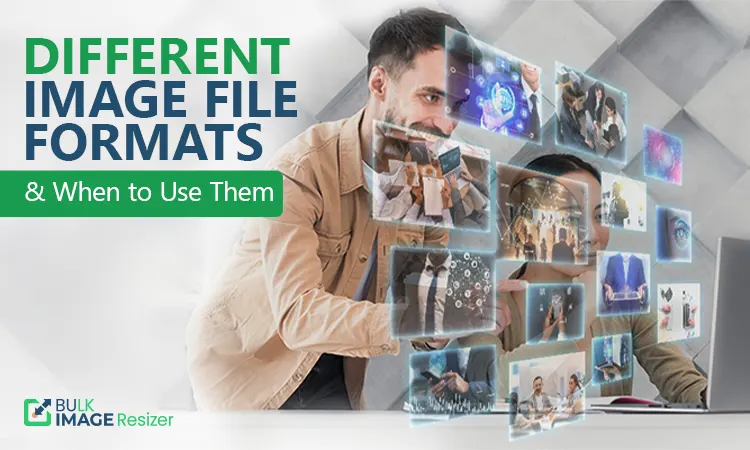What are the Different Image File Formats and When to Use Them?

One of the most effective techniques to level up your content is by utilizing picture file formats to your own advantage. Using the right photo format not only improves your image presentation, but speeds up the search engine ranking, increases your web speed, and drives more conversions too. Even photographs, avatars, or logos you see on the internet are image files.
The internet is full of picture file formats, each having its unique specifications. Want a small-sized image to upload on the brand site? Don’t worry! It is ideal to use a reliable bulkimageresizer automated tool to resize your desired photographs, retaining the quality. It is paramount to be aware of which picture formats are available and how they help us. Read on!
Common Picture File Formats and When to Utilize Them
You might know that the raster photo files can either be lossy or lossless. For example, lossless picture formats capture all of your original file data. Lossy photograph formats approximate what your actual photo looks like. Though lossy images can be reduced to a small size, it will reduce the original picture quality. This is why lossy files are smaller compared to lossless files, making them great to use online. Below are some file formats and everything you must know are.
1. PNG
PNG, also known as ‘Portable Network Graphics,’ is a raster photo file format, using lossless compression. PNG file format was created as a GIF replacement with no copyright restrictions. Over time, Portable Network Graphics has become a most widely used picture file format.
To Get a Small File
You can shrink PNG files to an incredibly small size, especially photographs that are simple text, shapes, or colors. If there is a need to compress your web graphic PNG photographs in small sizes, it is best to use the image compressor as it will maintain your complex photos’ quality.
To Have Illustrations with Restricted Colors
Working with illustrations having limited colors? No denying that any of the photographs will work. But, making use of PNG files is great with a small color palette. PNG formats support transparency, meaning that it allows you to create pictures with transparent backgrounds.
2. PDF
PDF is nothing but a portable document file that is more probably used when there is a need to save files, share, and print them easily. PDF is considered the best file type for resizing. You can use an image resizer to resize your PDF file images into other small-sized files like a4, etc.
To Display Web Documents
Want to display your important documents on the website? Making use of PDFs is great for magazines, booklets, flyers, and posters. This file format keeps your entire picture design in one package, hence making it much easier to print, download or view. Ideal for web documents!
To Present Graphics
One of the greatest reasons graphic designers prefer utilizing PDF format is that it retains the overall formatting of their designed graphics in the most precise way. If you don’t want to compromise the aspect ratio of your designs, it is a worthwhile option to use PDF format.
3. JPEG
JPEG is the photo file format that uses a lossy compression method. Despite a huge file size reduction, JPEG file photographs retain their quality. It allows users to compress their images, getting the desired results. High compression values mean low picture quality degradation risks.
To Deal with Online Photos
Dealing with online photographs is not difficult anymore. JPEG file format offers a higher level of flexibility with raster compression and editing making them the best choice for web images. However, if there is a need to convert your raw file into Jpeg, use the image converter tool.
To Send a Fast Preview Picture
Even if there is an instant need to send fast preview photographs to your customer, JPEG comes in handy. But how? For example, you can simply reduce the JPEG pictures to a small size, making them easily shareable through email. This is something that also makes JPEG an ideal option.
4. GIF
GIF, also known as ‘Graphic Interchange Format,’ is specially designed for photos that appear on the internet. Each GIF file can contain about 256 indexed colors and support almost 8 bits per pixel. It allows your frames or photographs to be combined, ending up with basic animations.
For Graphics with Low Colors
It is ideal to use GIF format when your graphics contain a low number of colors. For example, there may be massive solid color areas, hard-edged shapes, or needs to employ binary transparency. GIF file formats don’t support animations like PNG but are typically small-sized.
To Create Logos
You have no idea how GIF-animated logos are beneficial for your brand business. For example, using GIFs to create logos for your business site not only results in improved brand recognition, and separates your brand from the competitors, but garners your business worldwide too.
Whether you have to resize, compress or convert your brand photos from one file format to another, investing in the bulkimageresizer is ideal. Garner your online business right now!
